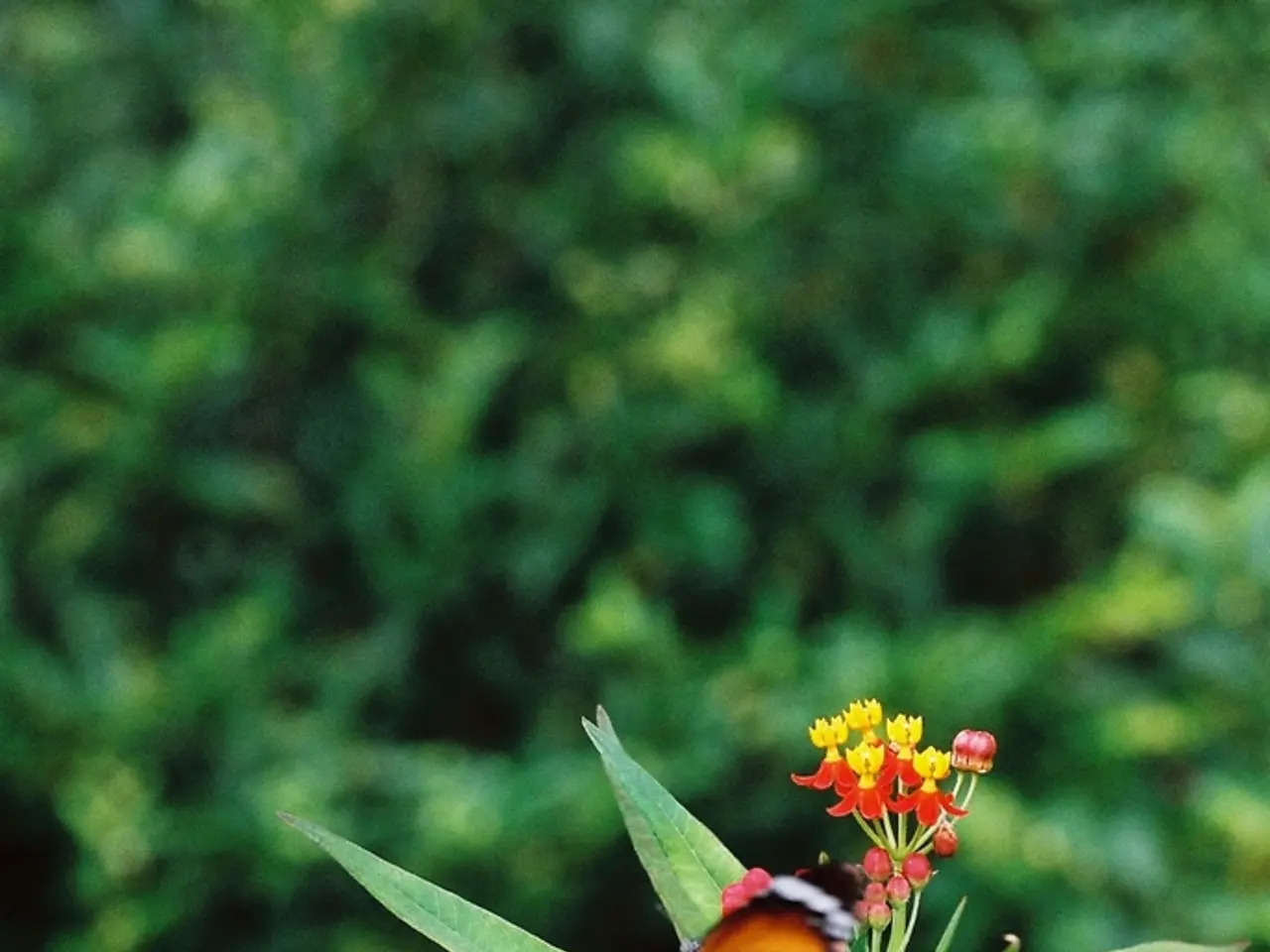14 Varieties of Flora Attracting a Diverse Range of Butterflies to Your Garden
Butterfly gardens are a delight for both nature enthusiasts and casual observers alike. These vibrant oases attract a diverse range of butterfly species, providing a haven for these delicate creatures. Here's a guide to some of the best flowers for attracting different species of butterflies.
Milkweed, Lantana, and Butterfly Bush (Buddleia) are strong butterfly magnets, offering abundant nectar. Milkweed, in particular, is a critical host plant for monarch butterflies, as their caterpillars feed exclusively on its leaves.
Mexican Sunflower (Tithonia rotundifolia) and Red Pentas are highly attractive to butterflies such as red swallowtails, thanks to their bright colors that butterflies prefer.
Coneflowers, Yarrow, and Black-eyed Susan are hardy and drought-tolerant, making them excellent for attracting various butterfly species and other pollinators.
English Lavender and Phlox are fragrant flowers that attract many nectar-feeding butterflies.
Hummingbird Mint (Agastache) and Orange Zest Cestrum are plants that attract both butterflies and hummingbirds due to their tubular flowers and bright colors.
For a butterfly-friendly garden, it's essential to plant a variety of native and nectar-rich flowers that bloom at different times to support butterflies throughout the season. Including host plants like milkweed supports butterfly reproduction by providing places for caterpillars to feed.
Some other flowers preferred by various butterfly species include Thistle, verbena, daisies, honeysuckle, clover, dill, zinnias, coneflowers, purple coneflower, asters, Sweetbay Magnolia, Sassafras, and Joe Pye Weed.
Joe Pye Weed, for instance, grows up to 7 feet tall and provides a reliable food source late in the season, from mid-summer to early fall. However, it's recommended to plant it at the back of flower beds to avoid shading smaller plants.
To maintain these flowers, it's crucial to water regularly, deadhead flowers to encourage new blooms, and space plants properly to avoid fungal diseases caused by poor air circulation.
In addition to planting the right flowers, creating a butterfly-friendly garden also means providing shelter and resting spots. Avoid using pesticides or herbicides, as they can harm butterflies and their caterpillars.
Some butterflies, like the great purple hairstreak, favour mistletoe for laying eggs and as a food source for their larvae. Others, like the spicebush swallowtail, prefer Sassafras.
Pawpaw Trees are essential for zebra swallowtails, as females lay eggs on their leaves, which provide the sole food source for larvae. They grow best in zones 5-9 and require a sunny, wind-protected area and well-drained, rich soil.
Goldenrod, a plant often believed to cause allergies, actually supports migratory monarchs by providing late-season nectar in autumn, aiding in their transcontinental journeys.
By following these guidelines, you can create a beautiful and thriving butterfly garden that will attract and support a diverse range of butterfly species throughout the season.
- To attract various species of butterflies, consider planting Milkweed, Lantana, Butterfly Bush (Buddleia), Mexican Sunflower (Tithonia rotundifolia), Red Pentas, Coneflowers, Yarrow, Black-eyed Susan, English Lavender, Phlox, Hummingbird Mint (Agastache), Orange Zest Cestrum, Thistle, verbena, daisies, honeysuckle, clover, dill, zinnias, coneflowers, purple coneflower, asters, Sweetbay Magnolia, Sassafras, and Joe Pye Weed.
- Some butterflies prefer specific host plants for their caterpillars, such as milkweed for monarch butterflies, and Sassafras for spicebush swallowtails.
- For a butterfly-friendly garden, it's essential to plant a variety of native and nectar-rich flowers that bloom at different times, and include host plants like milkweed to support butterfly reproduction.
- Creating a butterfly-friendly garden also means providing shelter and resting spots. Avoid using pesticides or herbicides that can harm butterflies and their caterpillars.
- The Joe Pye Weed, which grows up to 7 feet tall, provides a reliable food source late in the season and should be planted at the back of flower beds to avoid shading smaller plants.
- By following these guidelines, you can create a beautiful and thriving butterfly garden that will attract and support a diverse range of butterfly species throughout the season, such as the great purple hairstreak, which favours mistletoe, and the zebra swallowtail, which requires Pawpaw Trees for their larvae's food source.




